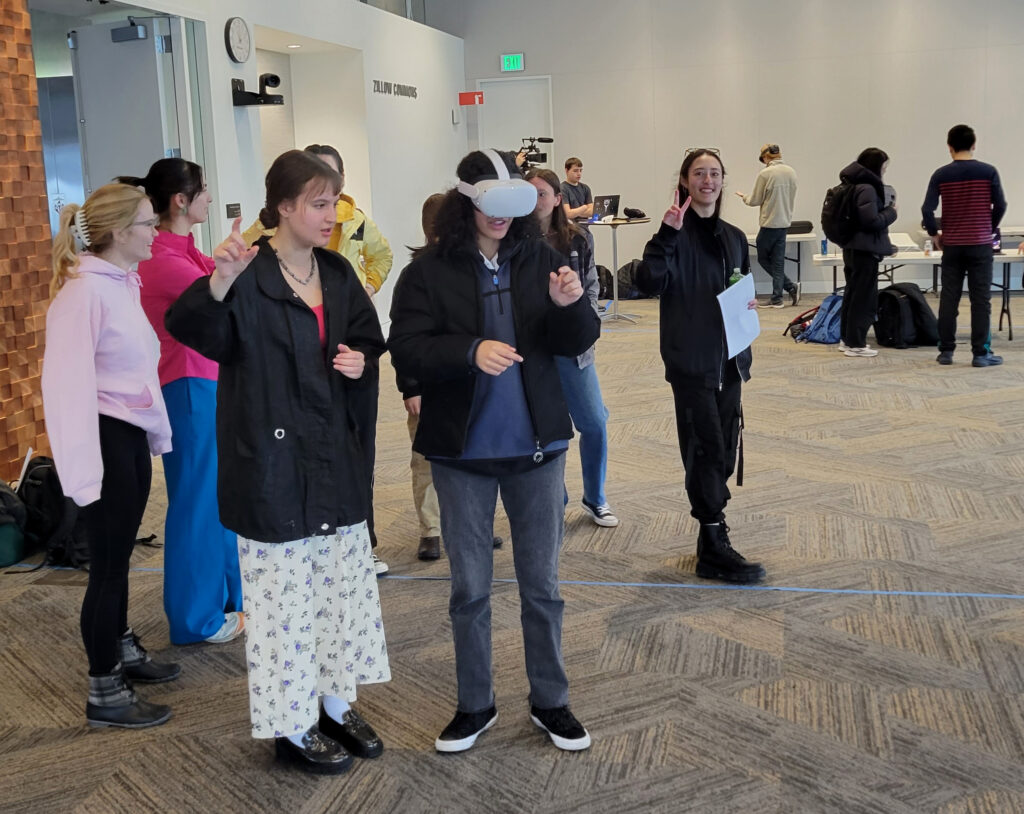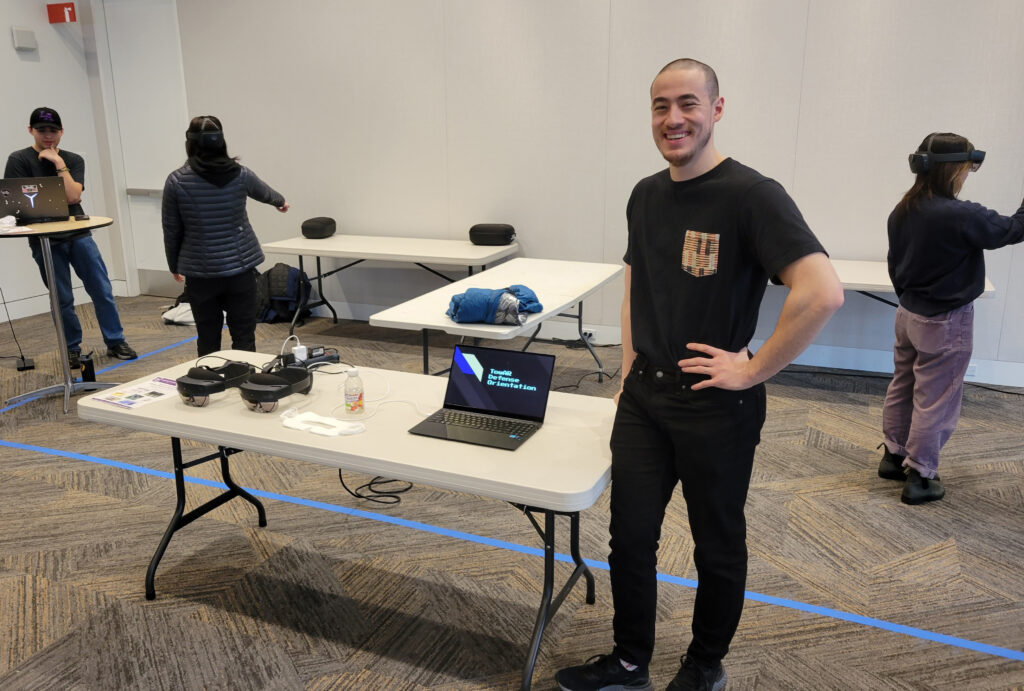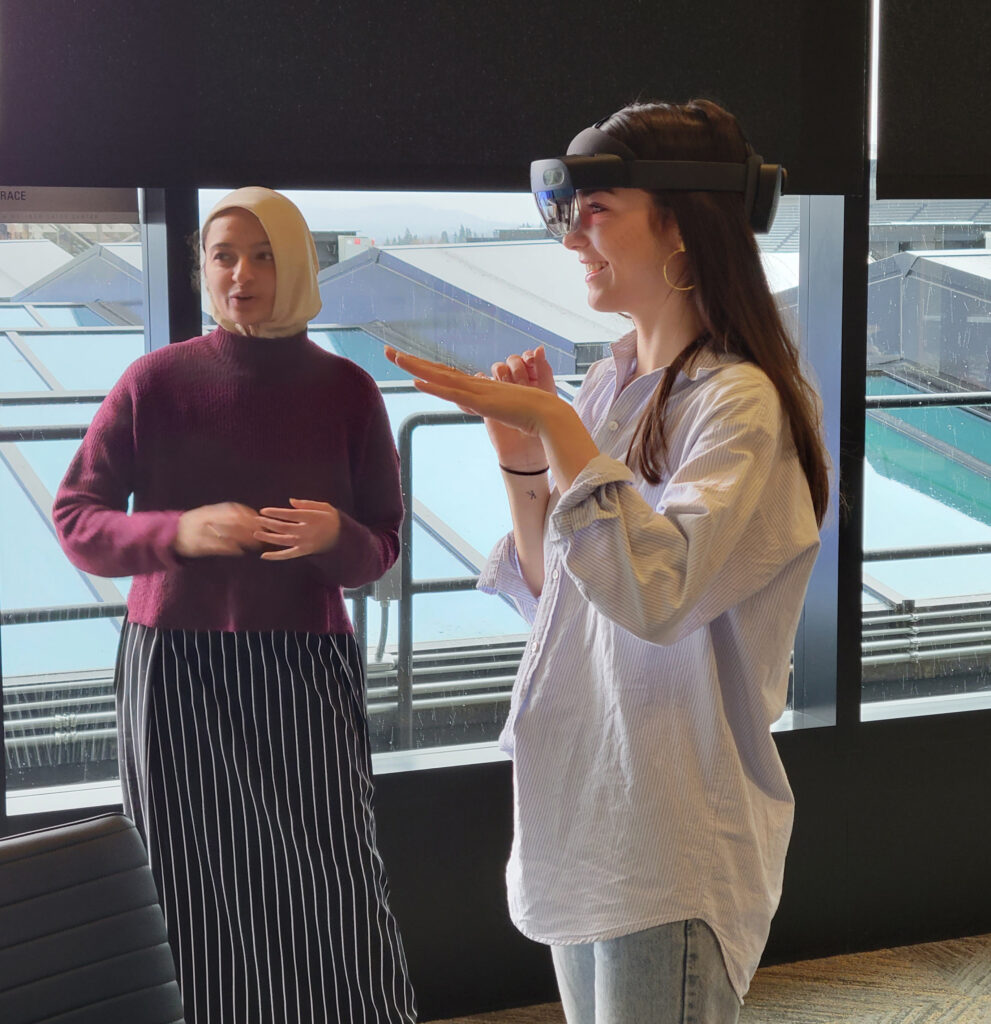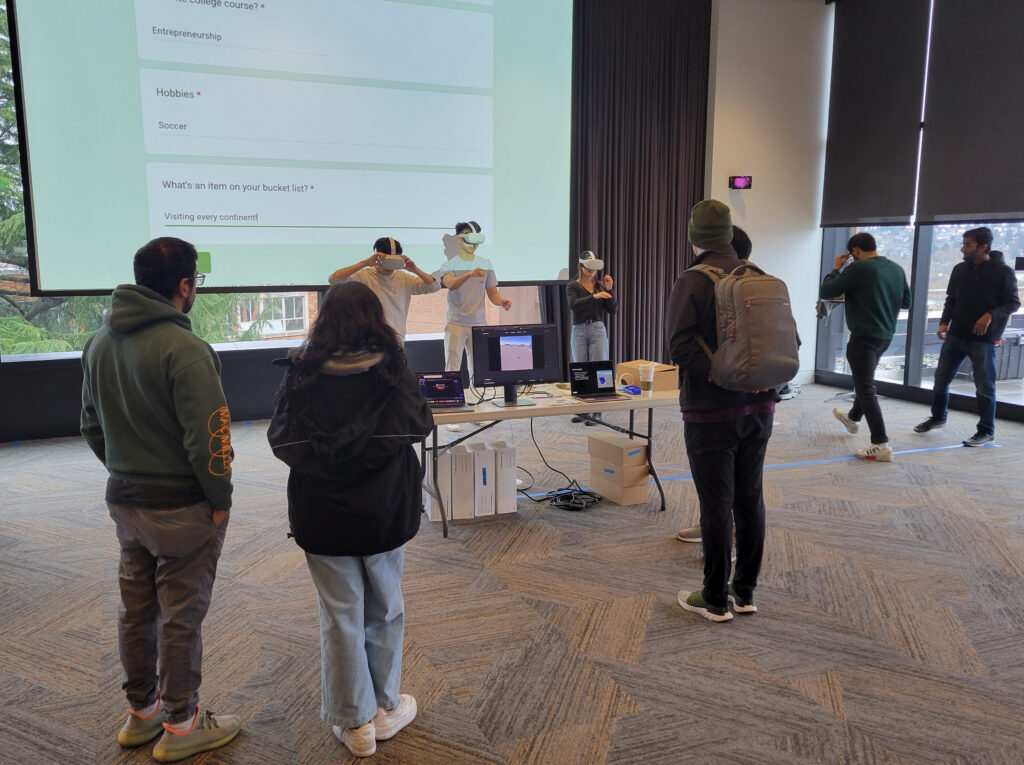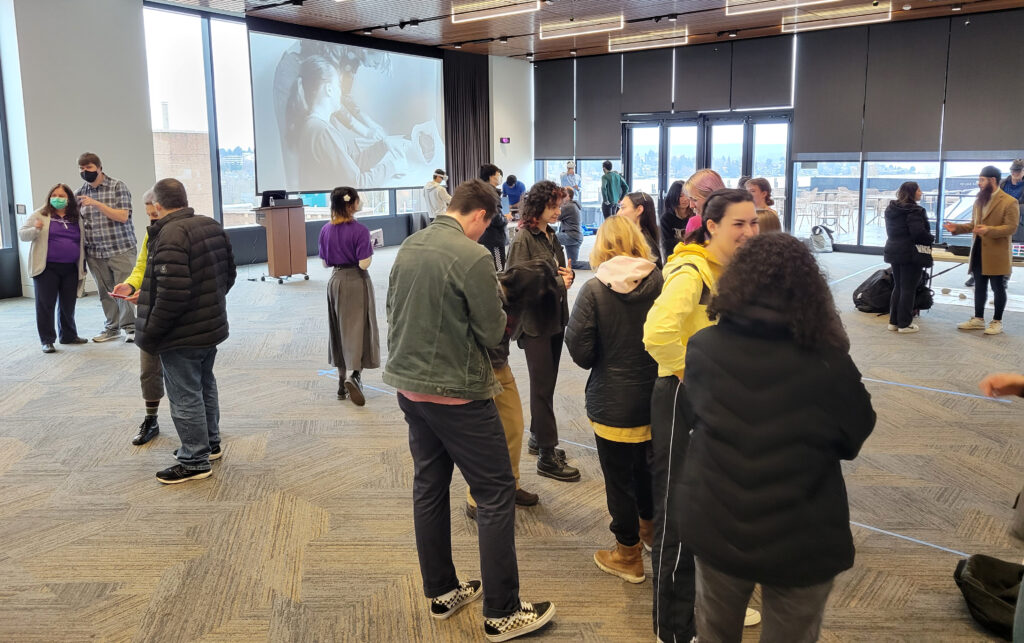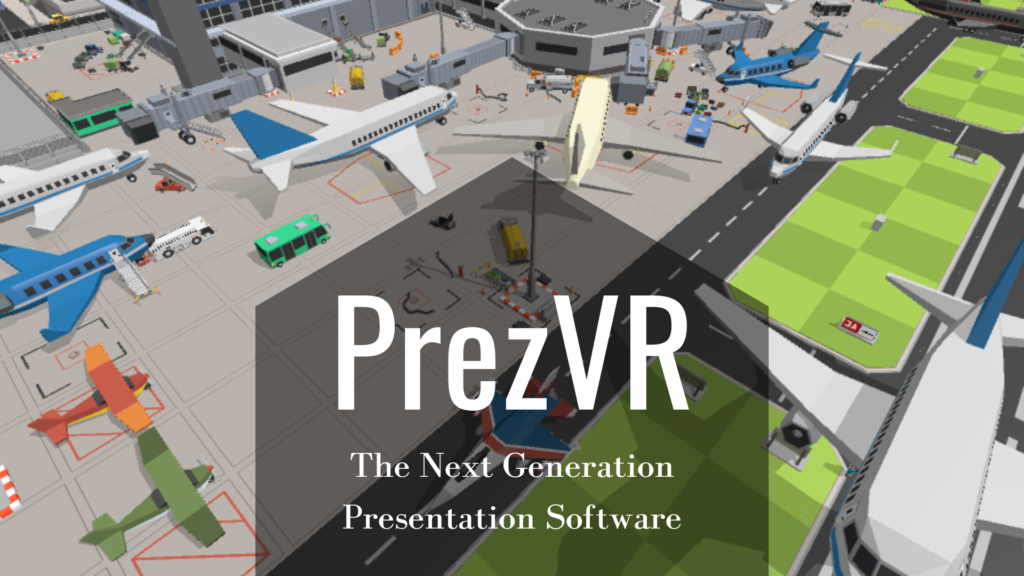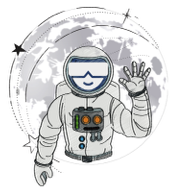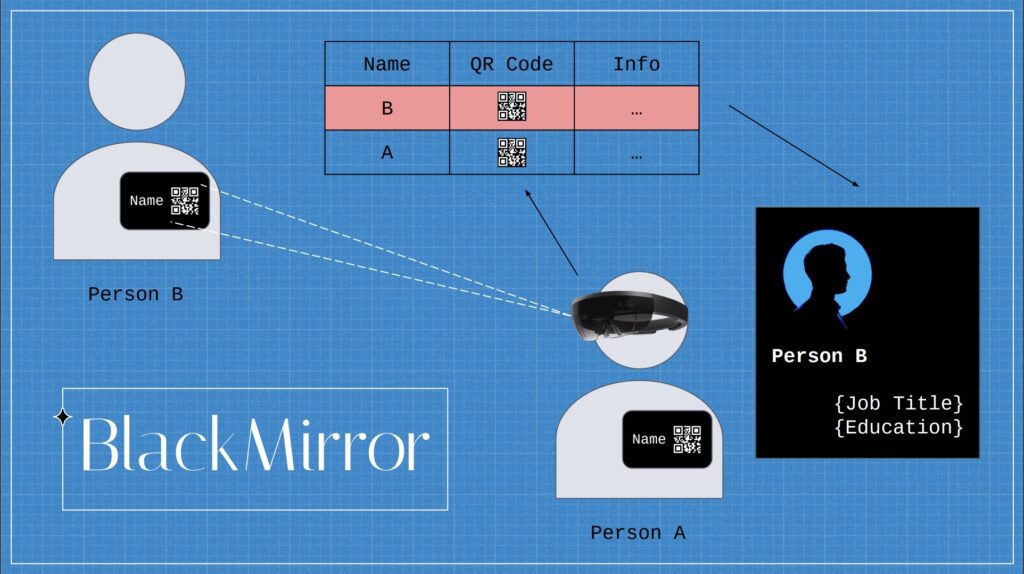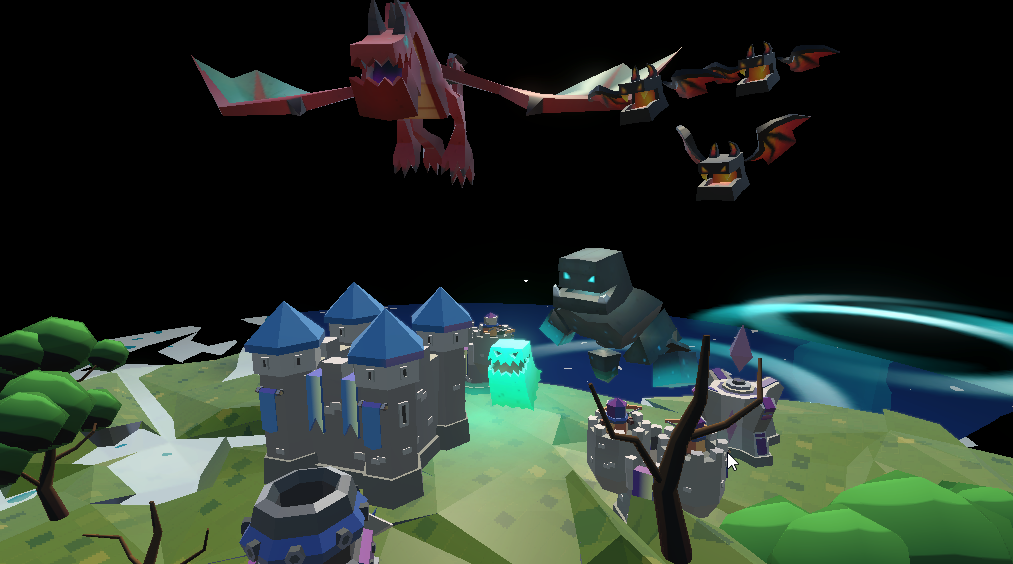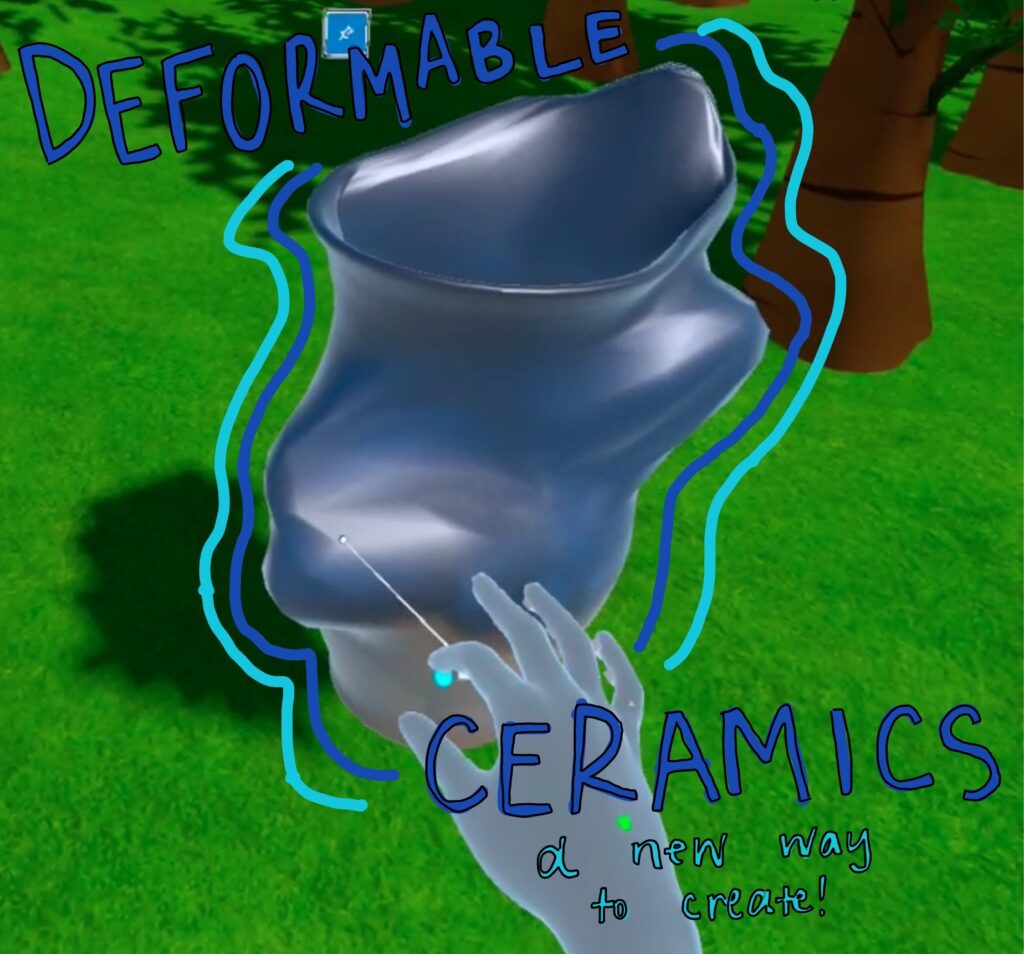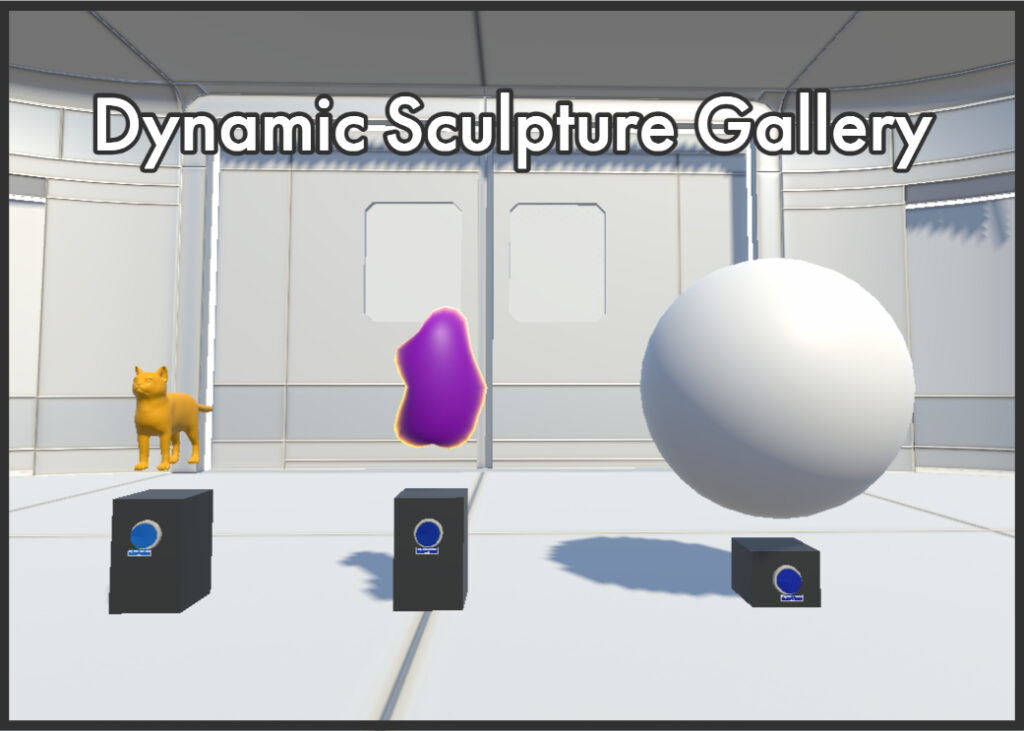Seven teams of UW students who took UW CSE’s AR/VR Capstone Class this past January-March set up demos of their projects last week and welcomed in the public to try out those demos for themselves.
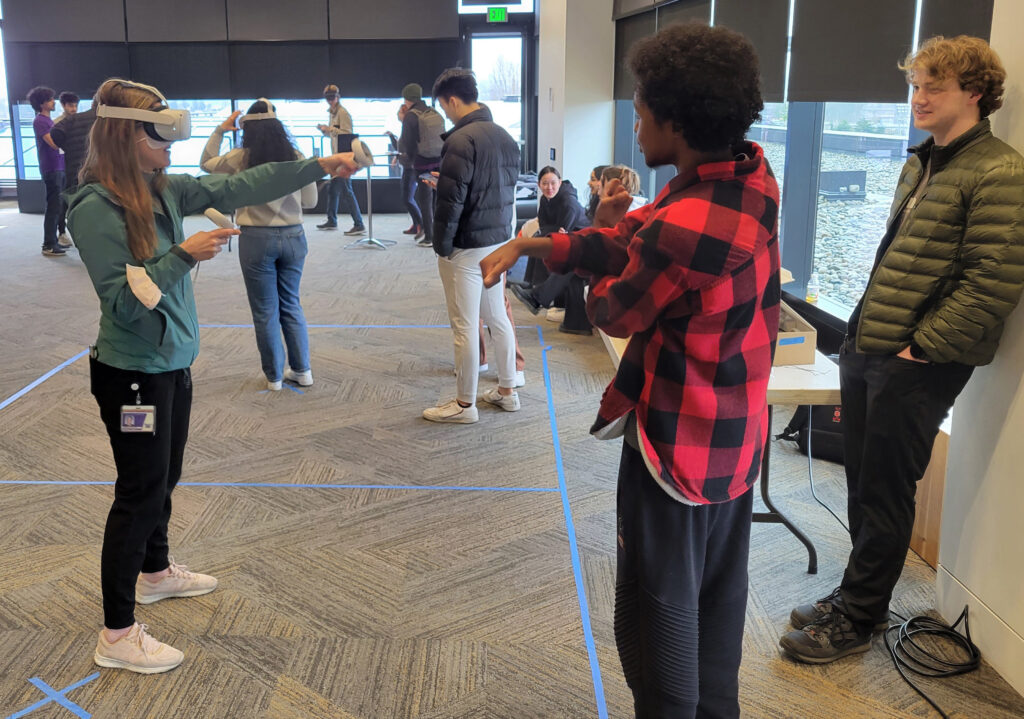
This was the 7th time the AR/VR Capstone class was held. The 7 teams took over the 4th floor of the Gates Center (“The Bill and Melinda Gates Center for Computer Science and Engineering”) and set up their props and display areas. For the Virtual Reality teams, this simply meant marking out an area for users. Meanwhile, the Augmented Reality teams set up tables, surfaces, and props that their applications would use to build the user experience. For example, the NASA SUITS team set out some “moon rocks” that users could navigate to and identify.
This was the first in-person AR/VR Demo Day at the school since 2019, from 2020-2022 the event was held online only due to the pandemic and it was great to return the event to an in-person venue, where visitors could put on the headsets themselves and try out the applications. Headsets were sanitized between each use. [Note, the lab’s YouTube channel has videos and demos from all 3 of those online years.]
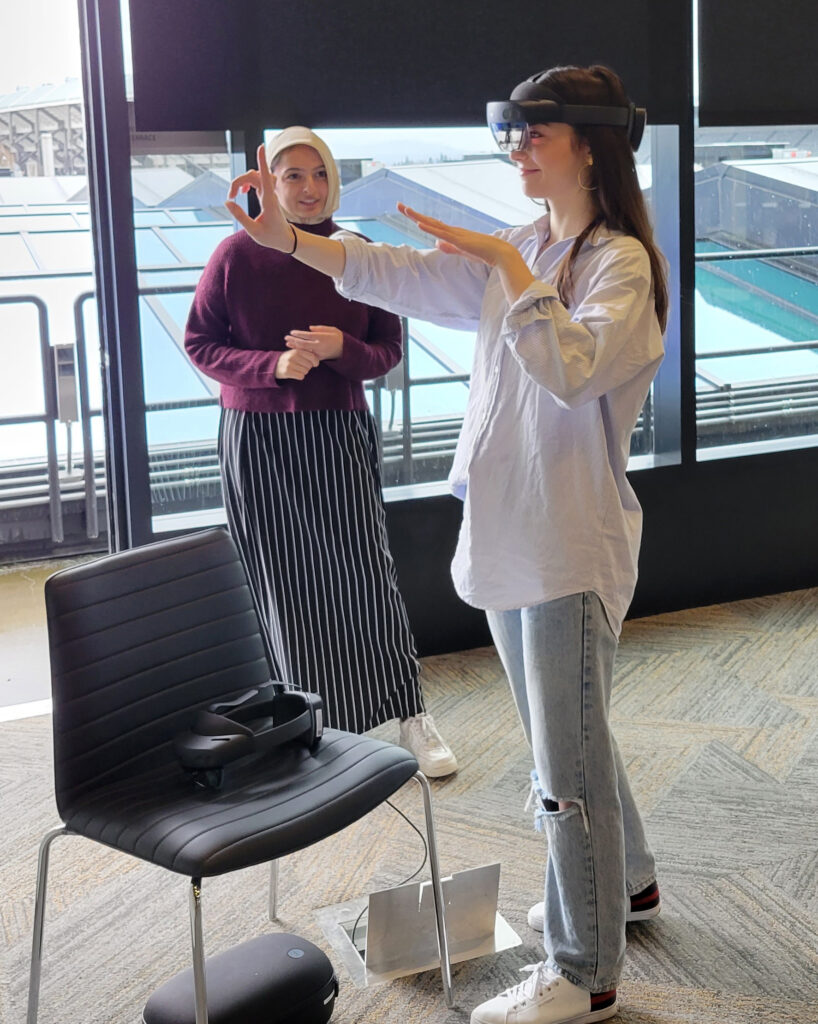
All seven applications were imagined, designed, coded and tested by the students for either the Hololens 2 or the Quest 2 headset. (Thanks to Microsoft and to Meta for supplying devices!!)
While most of the students had used a VR headset before the class began, few had used an AR headset, and fewer still had ever attempted to create their own application! Instructors Professor Ira Kemelmacher-Shlizerman and Director John Akers guided the students through learning Unity and MRTK, learning how the headsets work, and gave or arranged several talks and workshops on XR research and history – including 3 new Reality Lab Lectures where researchers visited the lab (either in person or over videochat) to discuss their work and the history of the field.
The stages of the class are designed to mimic the process of developing software as part of a team in industry, including ideation, PRD (product requirements document), MVP (minimum viable product), and of course Demo Day.
You can still try out these applications if you have a Quest2 or a Hololens2. There are gitlab links to the code in the team websites, below!
The projects were:
Team 1. Prez VR: The Next-Generation Presentation Experience (Team Website — Watch the promo video)
PrezVR’s VR tool suite enables presenters to create immersive presentations in VR and connect with their audiences at a new level of depth and understanding. With our easy-to-use UI, seamless scene transitions, and animation tools, presenters can showcase their vision for the future with ease. PrezVR allows for live editing, which means users can practice and make adjustments in real-time. Our product comes with an asset library, enabling users to build presentations from scratch in VR. Users can also instantaneously import custom assets into the scene without breaking their creative flow. PrezVR synchronizes animations and scene transitions across multiple users, enabling everyone, no matter where they are, to experience the presentation together in a shared space. Try PrezVR today!
Team 2. NASA SUITS (Team Website — Watch the promo video)
Experience what it is like to be a NASA astronaut! Our project aims to support astronauts conducting their essential research and daily tasks. We leverage computer vision and AR technology to identify geological points of interest, assist in navigation, and present important data using a minimal, non-obtrusive UI. This project is part of a nationwide challenge from NASA to develop a new generation of spacesuit, equipped with augmented reality functionality.
[The UW Reality Lab Incubator is also part of the NASA SUITS Challenge – Go Team Astrohuskies!]
Team 3. BlackMirror (Team Website — Watch the promo video)
BlackMirror is an augmented reality application that focuses on enhancing the networking experience. For each unique event, it provides relevant data about participating users via information they submitted beforehand. This is used to ease introductions, find common-ground, and form connections. BlackMirror works to enhance experiences in getting to know new people. Using the AR capabilities of HoloLens 2, users will opt into our experience and be given a QR code that associates them with their inputted information. Users will be able to scan and interact with other people’s profile during and after interactions with that person, providing information to seed conversation. Not only will this make conversations and connections easier, but it will make each user far more memorable in their networking experience.
Team 4. XRcise (Team Website — Watch the promo video)
XRcise is a fitness game where users are stranded on an island and must do a series of exercise challenges to get rescued. Exercises include knee drives to climb up a coconut tree, squats to shimmy back down the tree, punches to break open the coconut to eat for energy, and jumping jacks to wave down a rescue helicopter. Users may choose from several levels of difficulty, and receive a workout summary and statistics after the game.
Team 5. TowAR Defense (Team Website — Watch the promo video)
TowAR Defense turns your immediate surroundings into a dynamic play area! Place monuments and structures with different defense capabilities on the tables or chairs around you, transform your environment (greenery, Icy tundra, or lava!), and defend against waves of evil bats, ghosts, dragons and more!
Team 6. Deformable Ceramics (Team Website — Watch the promo video)
We have been working with interdisciplinary artist Timea Tihanyi to bring her techniques for creating 3D ceramic sculptures into the virtual reality space. Through various interactions, users can deform a variety of objects as though they were clay, as well as save their work via screenshots.
Team 7. Dynamic Sculpture Gallery (Team Website — Watch the promo video)
Art galleries in real life all have certain limitations. Most of the time, going to an art gallery is a very passive experience – the art pieces are static. Our Dynamic Sculpture Gallery aims to solve this problem by providing an interactive experience. Our project gives users the opportunity to interact with displayed pieces that move and change in reaction to them. Users can explore multiple interactive experiences based off of the dynamic sculptures in the main gallery. The end result is a gallery that provides more immersion and excitement than a standard art gallery.
Instructors: Ira Kemelmacher-Shlizerman, John Akers. TAs: Wei Sheng, Yueqian Zhang, Evan Zhao
More about the AR/VR Capstone Class (481v)
